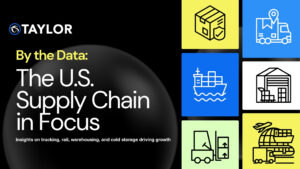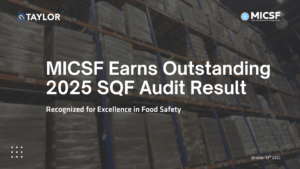
As we navigate through the second quarter of 2025, the global supply chain landscape is undergoing significant transformations driven by geopolitical developments, technological advancements, and evolving market demands. Understanding these dynamics is crucial for businesses aiming to maintain resilience and competitiveness. Below is an in-depth analysis of the current trends, updates, and predictions shaping supply chains in Q2 2025:
1. Geopolitical Tensions and Trade Policies
The recent implementation of extensive tariffs by the U.S. administration has introduced complexities into global trade dynamics. These tariffs, affecting imports from major trading partners such as China, Vietnam, and Bangladesh, have compelled companies to reassess their supply chain strategies. Industries heavily reliant on international suppliers, including automotive and electronics, are exploring options like diversifying supplier bases and relocating production facilities to mitigate increased costs and potential disruptions.
Insight: The fashion industry, for instance, is particularly vulnerable due to its heavy reliance on Asia-based supply chains. The “Liberation Day” tariffs have caused a major industry shakeup, increasing costs for brands and consumers while creating planning uncertainty. Companies are reevaluating sourcing strategies and facing margin pressures, especially in footwear, where compounded tariffs can raise costs by over 15%
2. Technological Integration and Automation
Businesses are increasingly adopting advanced technologies to enhance supply chain efficiency and resilience. Artificial Intelligence (AI) and automation are at the forefront, enabling companies to optimize routes, reduce operational costs, and improve decision-making processes. The integration of AI-driven analytics facilitates better demand forecasting and inventory management, allowing for more agile responses to market fluctuations.
Insight: A 2024 Economist Impact survey showed that fully 98% of executives have embraced AI to transform at least one aspect of their supply chain management. The rapid uptake of AI underscores its current ranking by the Harris Poll as the top priority in supply chain management to enhance efficiency and decision-making.
3. Labor Market Dynamics
The demand for skilled professionals in supply chain management is on the rise. Specifically, there is an anticipated 15% increase in the need for Directors and VPs in operations compared to the same quarter in 2024. This trend underscores the emphasis on optimizing logistics and distribution networks to meet evolving consumer expectations.
Insight: Companies are seeking experienced professionals to steer transformation efforts, implement predictive analytics, and strengthen their logistics strategies. This surge in demand reflects the critical role of leadership in navigating the complexities of modern supply chains.
4. Sustainability and Reshoring Initiatives
Sustainability remains a critical focus, with companies investing in eco-friendly logistics solutions and exploring reshoring or nearshoring manufacturing operations. UK companies, for instance, are set to invest $650 billion over the next three years to bring manufacturing closer to home, aiming to reduce carbon footprints and enhance supply chain resilience.
Insight: The adoption of circular economy supply chains is gaining momentum. Companies are designing products for longevity, implementing systems for collecting, refurbishing, and reselling used products, and reducing and recycling packaging and other waste materials.
5. Freight Market Adjustments
The freight market is experiencing adjustments due to shifting demand patterns and capacity constraints. Shippers are advised to prioritize service reliability and consider alternative transportation methods to navigate the evolving landscape effectively.
Insight: The U.S. freight market is entering a pivotal phase as it seeks to shake off tariff-driven demand uncertainty to resume its cyclical recovery. An interplay of inflation, volatile tariff policies, and labor market weakness makes demand conditions difficult to forecast.
6. Risk Management and Resilience Building
The importance of robust risk management strategies is more pronounced than ever. Companies are focusing on enhancing supply chain resilience by diversifying supplier networks, investing in technology for better visibility, and developing contingency plans to address potential disruptions.
Insight: Organizations that embrace digital twins, demand sensing, and proactive resilience strategies will find themselves ahead of the curve—while those still clinging to outdated, reactive models may struggle to keep up.
7. Cybersecurity Concerns
With the increasing digitization of supply chains, cybersecurity has become a critical concern. Companies are investing in robust cybersecurity measures to protect against data breaches and cyberattacks that can disrupt operations and compromise sensitive information.
Insight: The rise of digital supply chain networks represents a significant shift in how industries approach supply chain management. Ensuring the security of these networks is paramount to prevent potential vulnerabilities.
8. Advanced Analytics and Big Data
The utilization of big data and advanced analytics is enabling companies to gain deeper insights into their supply chains. By analyzing data from various sources, businesses can identify patterns, predict demand, and make informed decisions to optimize their operations.
Insight: Companies today can collect and combine massive amounts of supply and demand data from myriad sources, including Internet of Things (IoT) devices throughout the supply chain, historical purchasing records, weather reports, market research, and customer feedback.
9. Retail Compliance Is Getting Stricter—Again
Big-box retailers are tightening vendor compliance programs. From pallet configuration to ASN timeliness and labeling standards, the margin for error is shrinking. For high-growth DTC brands entering wholesale, it’s a crash course in compliance.
🎯 Compliance Stat: 3 out of 4 brands that failed to meet Q1 compliance standards cited inaccurate labeling and missed delivery windows as the top issues (source: Retail Dive x MCM Pulse Report 2025).
🔍 What It Means: It’s no longer enough for a 3PL to ship the order. They must understand the requirements of Target, Amazon, KeHE, and Costco—and get it right the first time.
10. Cold Storage Is Heating Up
The demand for temperature-controlled warehousing continues to grow—driven by frozen meals, plant-based foods, and pharmaceutical distribution. But capacity is limited, and retrofits take time.
❄️ Facility Insight: U.S. cold storage capacity grew just 3% in 2024, while demand rose by 12%, according to CBRE.
🔍 What It Means: Availability alone isn’t enough. Certifications (FDA, SQF), food safety audits, dock-to-stock speeds, and multi-client configurations are determining how cold storage partnerships are formed in 2025.
Final Take: The Next Phase of Supply Chain Strategy
Q2 2025 reveals a supply chain environment that is simultaneously tightening and expanding. Shippers are being asked to do more with less—faster, cleaner, and with more data accountability than ever before. The partners they choose will define their success.
✅ Let’s Build a Smarter Supply Chain—Together
At Taylor Logistics, we’ve helped food, beverage, and CPG brands adapt through change with customized warehousing, real-time WMS visibility, cold storage expertise, and the flexibility to scale fast.
📦 Need a certified, tech-forward 3PL?
📈 Want to reduce lead times and track performance?
🤝 Ready to grow with a true partner?
Sources
• Investopedia – Trump’s Wide-Ranging Tariffs Could Complicate Supply Chains
https://www.investopedia.com/wide-ranging-tariffs-offer-little-hope-for-supply-chains-11709471
• Vogue Business – New US Tariffs Throw Fashion’s Supply Chain into Turmoil
• The Times – UK Companies Set to Spend $650bn Bringing Their Factories Home
• McKinsey & Company – The State of AI: Global Survey
https://www.mckinsey.com/capabilities/quantumblack/our-insights/the-state-of-ai
• NetSuite – Supply Chain Trends 2025
https://www.netsuite.com/portal/resource/articles/inventory-management/supply-chain-trends.shtml
• LinkedIn – Navigating the Q2 2025 Job Market: In-Depth Analysis for Logistics
https://www.linkedin.com/pulse/navigating-q2-2025-job-market-in-depth-analysis-chain-sarah-jppjc
• Zipline Logistics – 2025 Q2 Freight Market Update & Predictions
• Flock Freight – Freight Market Trends and Forecasts for Q2 2025
https://www.flockfreight.com/blog/freight-market-trends-and-forecasts-for-q2-2025
• ASCM – Top 10 Supply Chain Trends in 2025
https://www.ascm.org/making-an-impact/research/top-10-supply-chain-trends-in-2025
• Xeneta – The Biggest Global Supply Chain Risks of 2025
https://www.xeneta.com/blog/the-biggest-global-supply-chain-risks-of-2025










